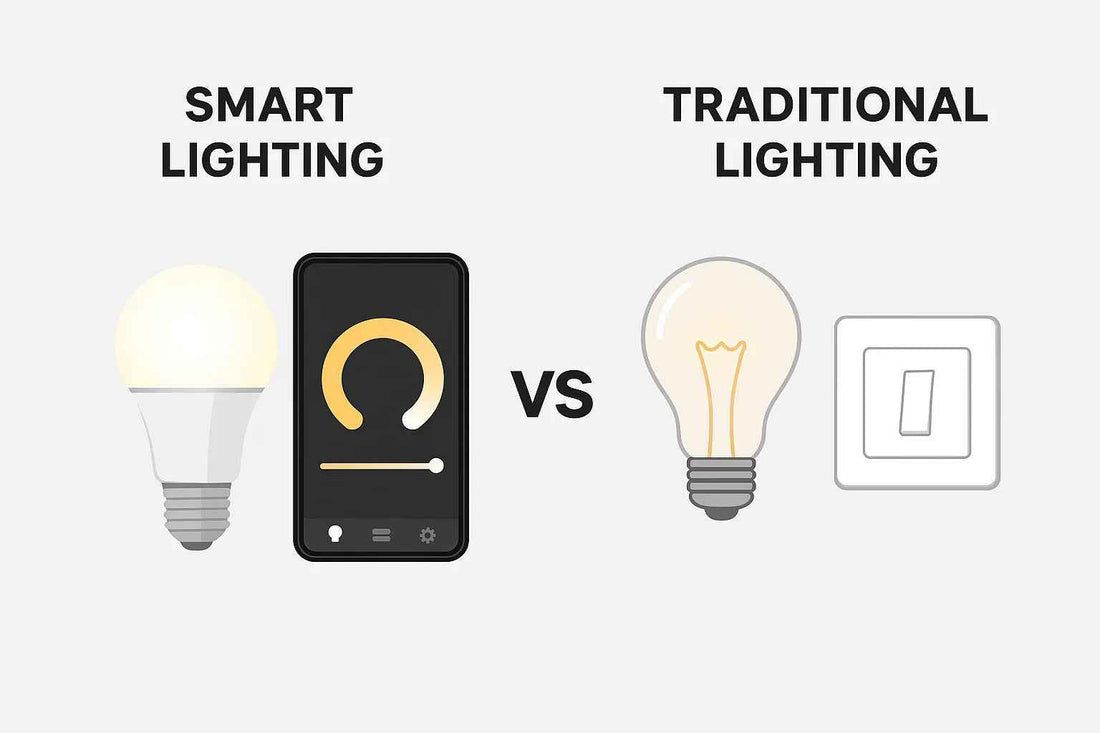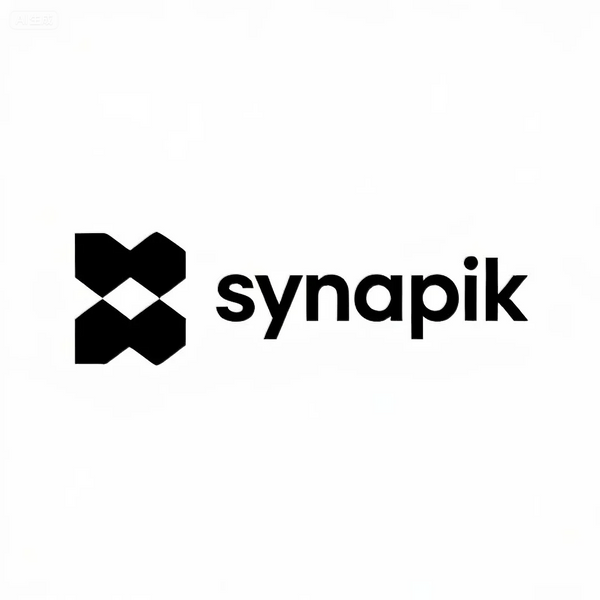
Smart Lighting vs Traditional Lighting: A Complete 2025 Guide by Synapik
Share
The Lighting Revolution in 2025
Lighting has always been an essential part of human life, but in 2025, the way we use it is changing. Traditional lighting, while familiar and affordable, struggles to meet modern demands for efficiency, sustainability, and flexibility. Smart lighting, on the other hand, is rapidly redefining how we experience illumination.
At Synapik, we believe that lighting should not only brighten spaces but also improve lifestyles. In this article, we’ll compare smart lighting vs traditional lighting and show why smart systems are the future of home and business illumination.
Understanding the Basics
What Is Traditional Lighting?
Traditional lighting includes incandescent bulbs, fluorescent lamps, and halogen lights. These fixtures rely on electrical wiring and manual switches to operate.
What Is Smart Lighting?
Smart lighting uses LED bulbs, wireless communication, and intelligent controls. With Synapik, users can manage their lighting via apps, voice assistants, or automated schedules, making it far more flexible than traditional systems.
Energy Efficiency: A Clear Winner
Traditional Lighting Power Consumption
Incandescent bulbs waste up to 90% of their energy as heat. Fluorescents and halogens are slightly better but still inefficient by today’s standards.
Smart Lighting Efficiency
Smart LED bulbs use up to 80% less energy. Combined with features like dimming, motion sensors, and scheduling, Synapik smart lights maximize savings without sacrificing brightness.
Cost Comparison: Short-Term vs Long-Term
Initial Investment
Traditional lights are cheaper upfront. A basic bulb can cost less than a dollar. Smart bulbs cost more initially but are long-lasting and energy-saving.
Maintenance and Replacement
Traditional bulbs burn out quickly, requiring frequent replacements. Synapik LEDs last 25,000–50,000 hours, reducing waste and costs.
Return on Investment
Over five years, homeowners often spend more on electricity and replacement bulbs for traditional lighting than the upfront cost of switching to Synapik smart lighting.
Environmental Impact
Traditional Lighting and Carbon Footprint
Traditional lights consume more power, which translates to higher greenhouse gas emissions from electricity production.
Smart Lighting Sustainability
Synapik smart lighting reduces carbon footprints by lowering energy consumption and using recyclable components.
Control and Convenience
-
Traditional Lighting: Controlled by wall switches with no flexibility.
-
Smart Lighting: Managed through mobile apps, voice commands, or automation. Synapik lights adapt to your lifestyle, whether you’re at home or away.
Aesthetic and Lifestyle Benefits
Smart lighting allows you to create moods, highlight architectural features, and set the perfect tone for any occasion. Traditional lighting, while functional, lacks personalization.
Integration with Smart Homes
Synapik smart lighting integrates seamlessly with other IoT devices—thermostats, alarms, and even entertainment systems. Traditional lighting cannot connect to modern smart home platforms.
Safety and Security Advantages
Smart lights can simulate occupancy when you’re away, reducing burglary risks. Motion-sensor lighting also enhances outdoor safety. Traditional lights lack these intelligent features.
Durability and Weather Resistance
Outdoor smart lighting options from Synapik are built to withstand rain, snow, and extreme temperatures. Traditional outdoor lights are more vulnerable to weather damage.
Real-Life Applications: Where Each Works Best
-
Traditional Lights: Best for temporary or budget-conscious solutions.
-
Smart Lights: Perfect for long-term use in homes, gardens, and businesses that value efficiency, comfort, and style.
Why Choose Synapik Smart Lighting
Synapik products combine innovation with reliability:
-
Energy-efficient LEDs with long lifespans
-
Customizable features for mood and function
-
Smart integration with leading platforms
-
Eco-conscious design for sustainable living
By choosing Synapik, you’re future-proofing your home.
FAQs About Smart vs Traditional Lighting
Q1: Is smart lighting more expensive than traditional?
Initially yes, but long-term savings make it cheaper.
Q2: Do smart lights need Wi-Fi?
Not always. Synapik supports Wi-Fi, Bluetooth, and Zigbee options.
Q3: Can smart lights match the brightness of traditional bulbs?
Yes. Smart LEDs are just as bright and more efficient.
Q4: Is smart lighting safe from hacking?
Synapik uses encrypted communication to keep systems secure.
Q5: Can I install smart lights myself?
Yes. Most smart bulbs are plug-and-play with easy app setup.
Q6: Do smart lights really save energy?
Yes. With automation and efficiency, households save up to 70%.
